
Manufacturers are mitigating disruptions with HoloLens 2 and Dynamics 365 mixed reality solutions
This article is contributed. See the original author and article here.
The challenges of the past few years have highlighted that no business is immune to sudden changes. Embracing mixed reality as a strategic initiative is key to ensuring business continuity and solidifying future stability and resiliency. Microsoft’s comprehensive ecosystem of mixed reality solutions, including Microsoft HoloLens 2, Dynamics 365 Remote Assist, and Dynamics 365 Guides, help manufacturing organizations navigate complex situations, empower frontline workers, and create new customer experiences.
The benefits of adopting mixed reality today are significant. Based on the Microsoft-commissioned Forrester Total Economic Impact (TEI) report (“HoloLens 2 TEI study”), HoloLens 2 is delivering 177 percent return on investment (ROI) and a net present value (NPV) of $7.6 million over three years with a payback of 13 months. According to the HoloLens 2 TEI study, manufacturing organizations that have deployed mixed reality solutions on HoloLens 2 have:
- Reduced training time by 75 percent, at an average savings of $30 per labor hour.
- Saved an average of $3,500 per avoided expert trip.
- Avoided 240 to 320 hours of average lost throughput per year.
Increase productivity with remote inspection and audits
Dynamics 365 mixed reality is reducing the requirement to fly in an expert technician and/or an auditor on site to conduct an inspection. With Dynamics 365 Remote Assist on HoloLens 2, manufacturing companies can conduct routine inspections and audits with remote experts from any place in the world at any time. Manufacturers can deliver real-time, interactive guidance from experts located anywhere in the world right to their employees on the factory floor. This solution allows onsite workers to collaborate with remote leaders and experts to solve business problems in real-time, using 3D annotations to access, share, and bring critical information into view. With accurate real-world overlay of 3D assets, instructions, and collaborative markup, workers are free to see their surroundings and use both hands during inspections.
Dynamics 365 Remote Assist on HoloLens 2 enables manufacturer organizations to conduct site visits, inspections, maintenance, and repairs remotelyboosting efficiency and reducing costs. According to the HoloLens 2 TEI study, manufacturers saved an average of $3,500 per avoided expert trip.

Eaton, a multinational power management company, sought a solution to enable the company to conduct audits remotely. Traditionally, auditors had to travel to plants to conduct audits but during the COVID-19 pandemic travel was brought to a standstill and travel was restricted. With Dynamics 365 Remote Assist on HoloLens 2, employees can walk through the audit checklist with the remote auditor and ensure that employees are following safety guidelines. Since launching Dynamics 365 Remote Assist on HoloLens 2, Eaton is averaging more than 50 remote sessions per month across all global sites saving hundreds of thousands of dollars on travel-related expenses and empowering Eaton to pay-off its mixed-reality investment within five months.
“Using Remote Assist on HoloLens, we’re bringing the outside viewer perspective into the plant. Let’s say they are checking a quality dimension. If someone on the call has been on another Gemba walk in another site, they can say, ‘You should contact plant XYZ, because they do a similar measurement, but they’re using an automated process.”Alexandre Georgetti, Director of Eaton’s Vehicle Group Manufacturing Strategy. Read more about Eaton’s story here.
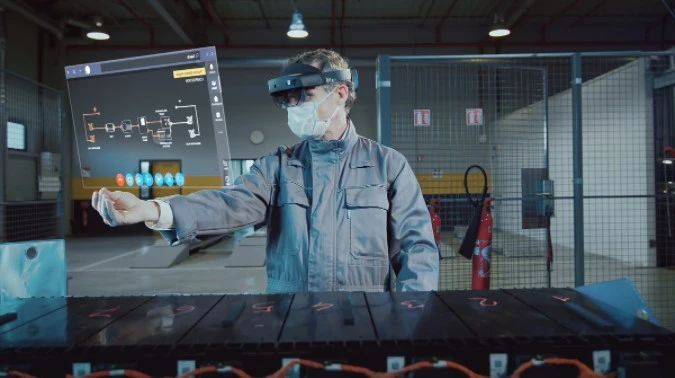
Address manufacturing skills gap with guided assembly and training
Dynamics 365 mixed reality is reducing the knowledge gap and helping enterprises adapt at the speed of change. Using Dynamics 365 Guides on HoloLens 2, manufacturing companies are accelerating learning, standardizing processes, and reducing errors with step-by-step instructions. Simply use your PC and the Microsoft HoloLens app to author instructions and easily place 2D and 3D content in the real-world environment, showing users how and where to complete tasks.
Dynamics 365 Guides on HoloLens 2 empowers manufacturing organizations to offer expansive training programs that teach skills and processes that are specific to their offerings and production needs. Furthermore, manufacturers see direct improvements in learning and retention, quality of work and downtime, and training costs savings. According to the HoloLens 2 TEI study, manufacturers reduced training time by 75 percent, at an average savings of $30 per labor hour.
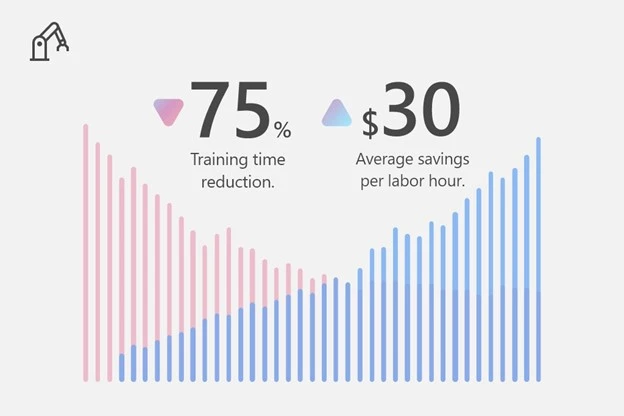
Toyota, a multinational automobile manufacturer, produces over a million vehicles each year in North America and depends on solid training programs that ensure team members are building every car to precise specifications. Traditionally, trainers worked one-on-one with team members, demonstrating a process, and then watching them replicate it. Toyota found this approach to be inefficient and susceptible to bottlenecks. With Dynamics 365 Guides on HoloLens 2, trainers create training materials and allow team members to train independently and understand the steps involved and repeating any necessary motions numerous times to develop muscle memory while allowing for one trainer supervisor to supervise multiple trainees at the same time. Since deploying Dynamics 365 mixed reality solutions on HoloLens 2, Toyota has reduced inspection time by 20 percent.
“Our training efficiency is increased, trainers and trainees are receptive to the technology, and they rank Dynamics 365 Guides on HoloLens 2 as their preferred way to learn.”Zach Reeder, Technology Development Engineer at Toyota Motor North America. Read more about Toyota’s story here.

Connect workers with experts to enable always on service
Dynamics 365 mixed reality is helping enterprises deliver exceptional service with personalized customer experiences. Dynamics 365 Remote Assist on HoloLens 2 connects field technicians with remote experts for a seamless collaboration that includes content capture abilities, interactive annotations, and contextual data overlays for easier repairs and fixes. Equip field technicians with all the important, relevant information directly into their line of sight, creating actionable experiences for employees.
Dynamics 365 Remote Assist on HoloLens 2 improves field task efficiency, reduces rework, and improves first-time fix ratesincreasing capacity for work and improving customer outcomes. According to the HoloLens 2 TEI study, manufacturers avoided 240 to 320 hours of average lost throughput per year.

L’Oral, one of the top multination cosmetics manufacturers with employees in 150 countries, has a wide range of products that require sophisticated machinery for production and packaging. When a machine requires service, L’Oreal flies out an expert to address the issue, increasing downtime machine and travel costs. To solve this challenge, L’Oreal deployed Dynamics 365 Remote Assist on HoloLens 2 to enable remote experts to effectively collaborate with frontline workers to resolve the issue expeditiously and reduce operational costs. With Dynamics 365 Remote Assist on HoloLens 2, remote experts can see what the technician sees and react to the same image with annotations and share critical information in real-time. Since deploying Dynamics 365 Remote Assist on HoloLens 2, L’Oreal has reduced downtime by 50 percent.
“The time we spend on diagnostics and resolving issues has been cut in half. This has led directly to lower operational costs. It has also allowed us to be more agile and flexible”Georges-Alban Farges, Industrial Performance Manager at L’Oral. Read about L’Oral’s story here.

Next steps
Stay tuned as we continue this blog series with a deep dive spotlight on healthcare, education, architecture, engineering, and construction industries. In the meantime, learn more about mixed reality applications on HoloLens 2 and get started today:
- Learn more about Microsoft HoloLens 2 and mixed reality capabilities.
- To learn more about business benefits and cost savings of mixed reality solutions, read the Total Economic Impact Of Mixed Reality Using Microsoft HoloLens 2 report.
- Request a Dynamics 365 Mixed Reality demo on Microsoft HoloLens 2. Book an appointment with our Microsoft Stores team today. Select ‘Other’ under Choose topic and reference HoloLens 2 demo in “What can we help with”.
Sources:
1- The Total Economic Impact Of Mixed Reality Using Microsoft HoloLens 2 Report, Forrester, 2022
The post Manufacturers are mitigating disruptions with HoloLens 2 and Dynamics 365 mixed reality solutions appeared first on Microsoft Dynamics 365 Blog.
Brought to you by Dr. Ware, Microsoft Office 365 Silver Partner, Charleston SC.

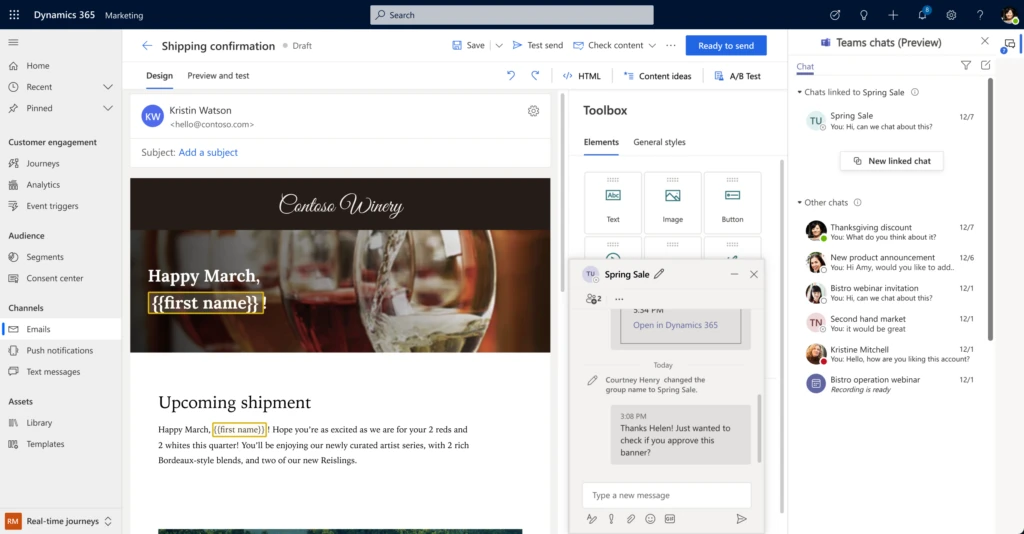


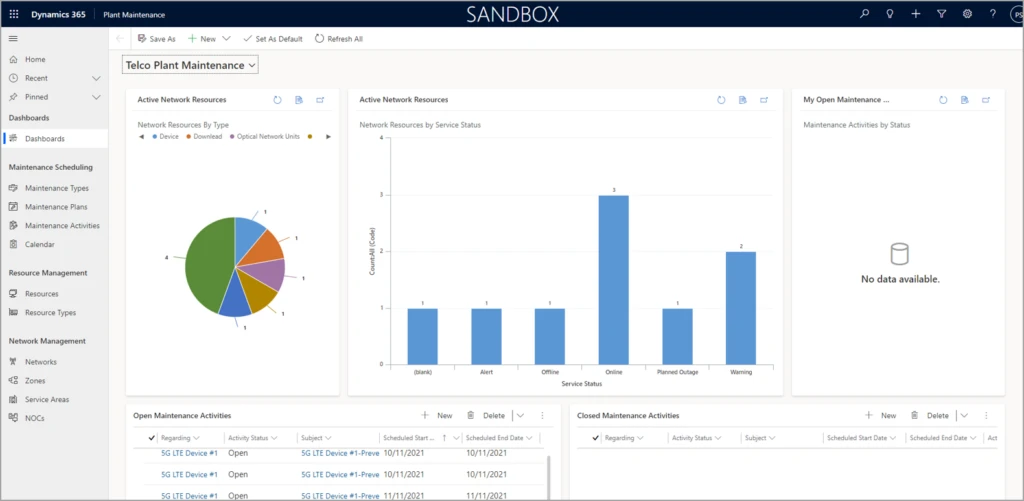

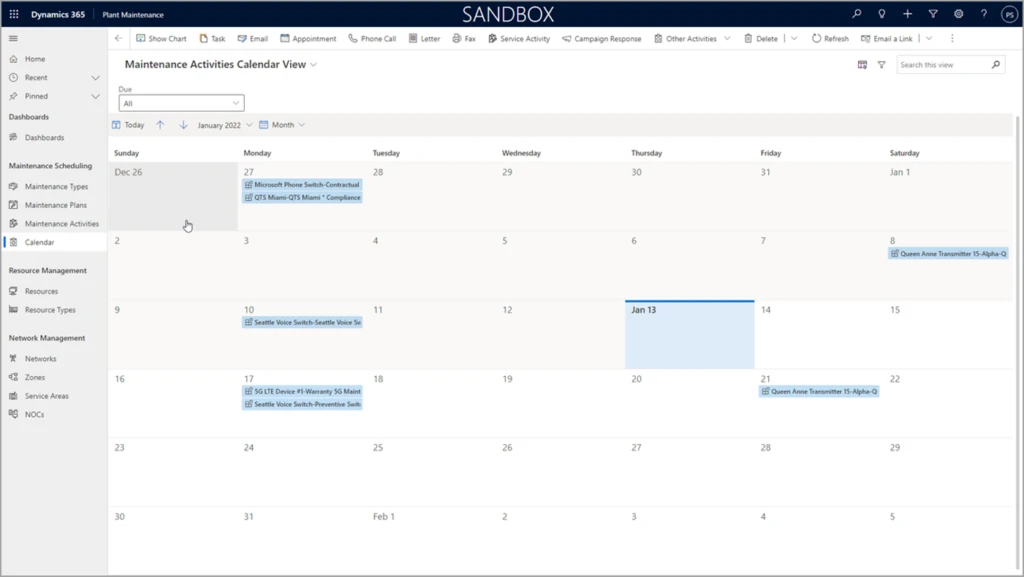

Recent Comments